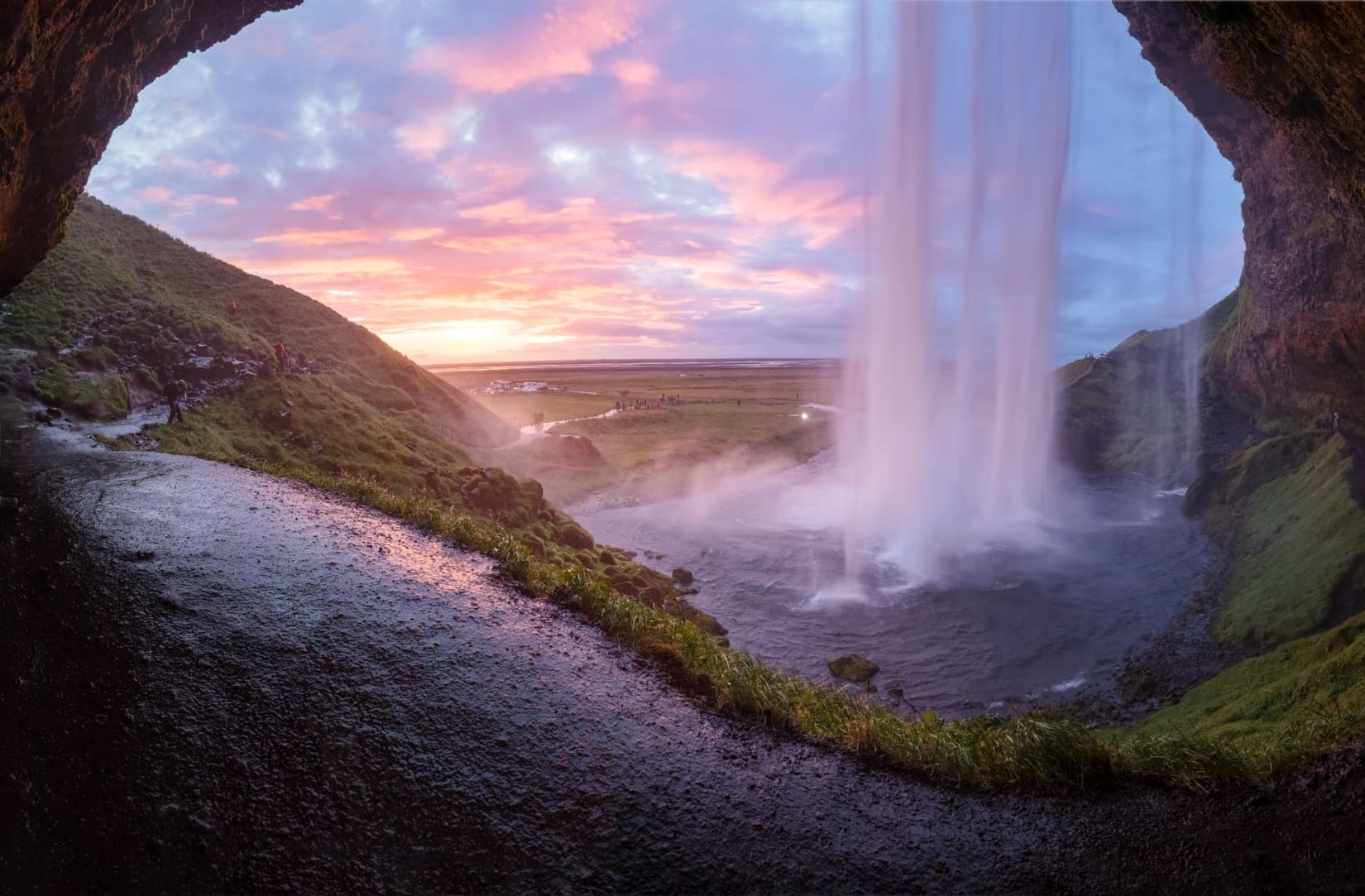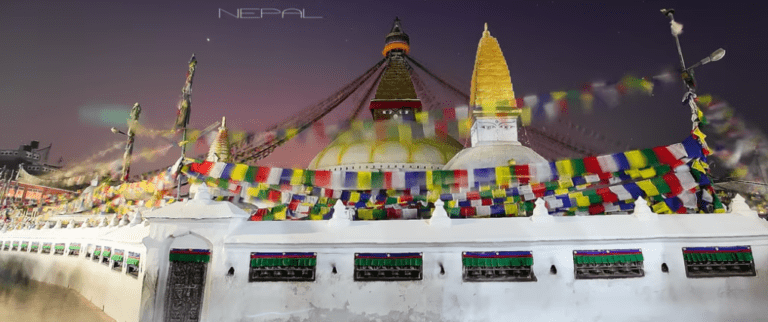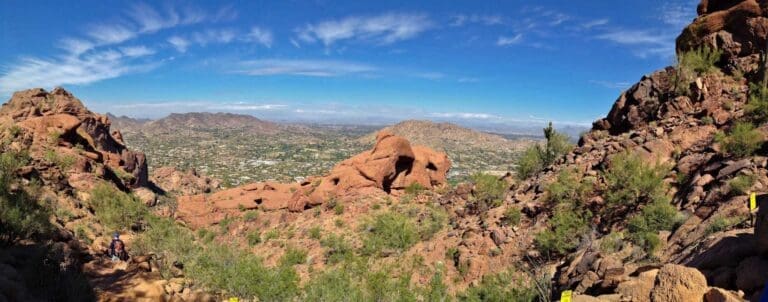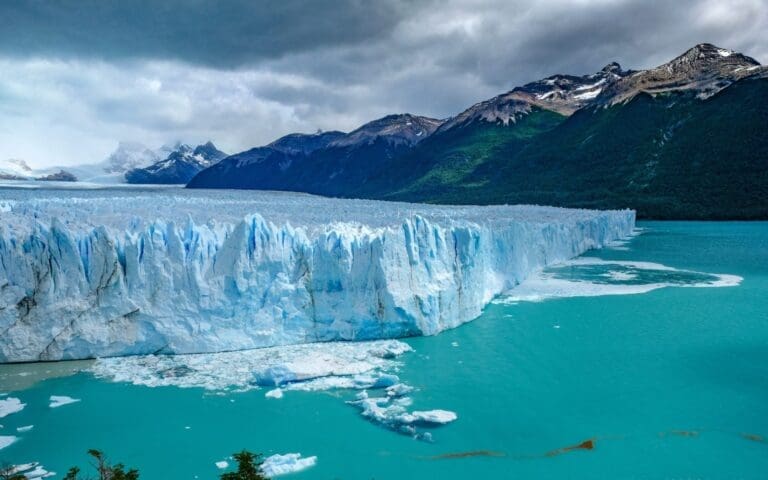14 Best Places to Visit in Iceland in 2025
Iceland is hailed as the Land of Fire and Ice; one of the last remaining frontiers of Europe, where Mother Nature still reigns supreme. It’s a barren world, where basalt columns, petrified lava fields, mist-plumed waterfalls and creaking glaciers abound, and where glimpses of whales or the Northern Lights are more common than traffic jams. To ensure you do not miss some of the best places to visit in Iceland we have created a guide for you.
Tempted? We can see why. The island of Iceland is almost tailor-made for budding adventurers. Everything from scenic ring roads to challenging hiking paths over ancient ice fields is on the menu. This guide showcases just 14 of the best places to visit in Iceland, including the iconic Blue Lagoon and the roaring Gullfoss falls.
1. Thingvellir National Park
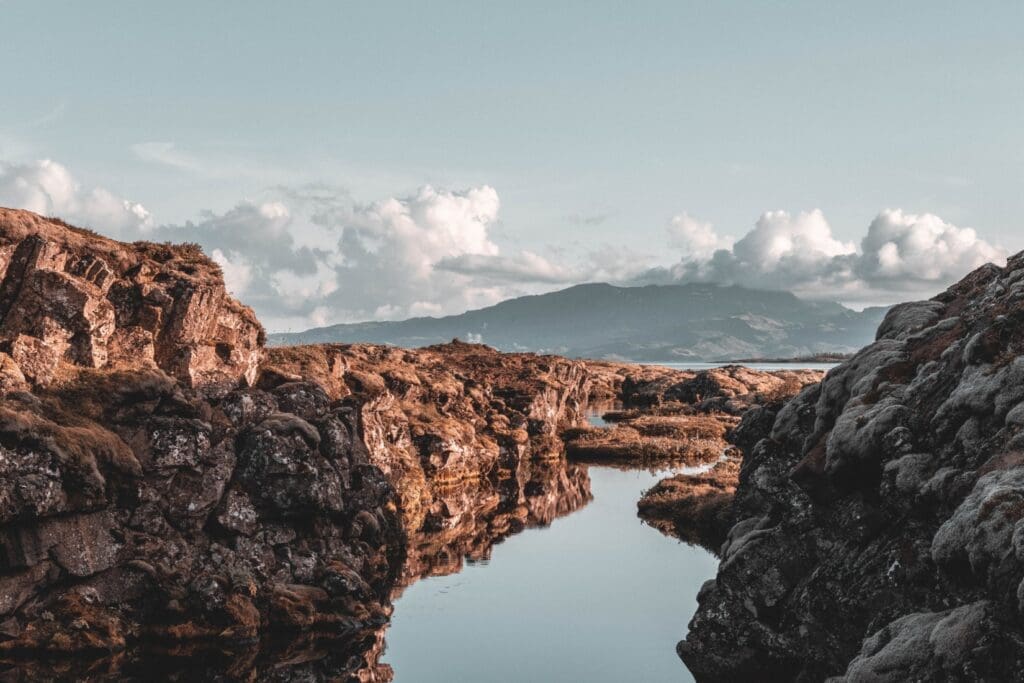
Thingvellir National Park marks the spot where the tectonic plates of Europe and North America rip apart in different directions. They do that in grand fashion, tearing huge grykes and canyons into the earth, many of which are now filled with crystal-clear spring waters. Some tours even offer scuba diving in the fissures there, letting you swim between two continents. Others will take you on the rambling paths past the colossal volcanic rock protrusions of Lögberg and up to the handsome Öxarárfoss waterfall.
But Thingvellir isn’t just about the geology and the wild natural surroundings. It’s also a place central to Iceland’s national history. It was the original meeting place of the Althingi, Iceland’s national assembly, which began way back in the year 930 AD. Leaders would come here to recite the law of the land, and the rocks and crevices were a forum for all sorts of merchants and swordsmiths and farmers throughout the Middle Ages, making it one of the best places to visit in Iceland.
2. Reynisfjara
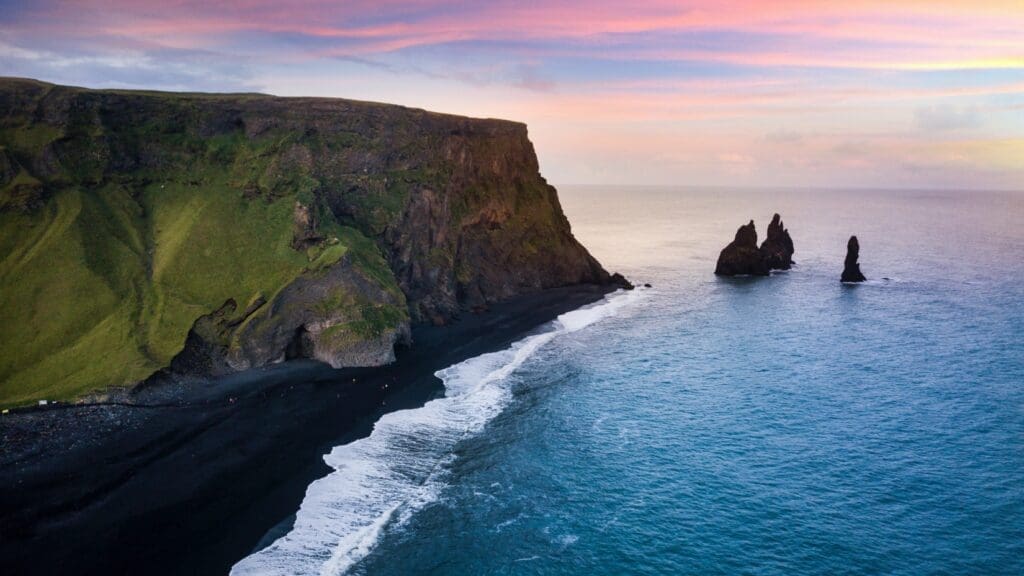
One of the most eye-wateringly wonderful parts of the rugged South Coast region of Iceland, Reynisfjara is a land of twisted rock spires and jet-black stone. The whole place has been carved and whittled away by the unceasing movements of the Atlantic over the millennia. They are what have created the strange Reynisdrangar, a series of dagger-like stacks of stone that emerge straight from the ocean a few hundred meters off the headlands to the east.
Once you’re done gawking in awe at one of the best places to visit in Iceland, you can turn your attention to the strange, cubist basalt cliffs that loom on the north end of the beach. There are deep, dark caves there, too, opening onto a wide bay of shadowy volcanic sand. Keep venturing westwards on the clifftop paths and you can also discover the rock arches of Dyrhólaey, where a hardy lighthouse offers a viewpoint that’s sure to blow away the proverbial cobwebs.
3. Vik

Enfolded by sheer-cut rock faces to the west and the frothing waves of the North Atlantic to the south, Vik is often called Iceland’s most picturesque seaside town. Only 300 people live here, but plenty of travelers pass through. Some come to gaze at the jet-black beaches that score in front of town. Others are on the hunt for a prized photo with Vik’s famous red-roofed church (the Víkurkirkja Church) and quaint coast cottages.
Whatever you’re drawn by, be sure to set aside some time to case out the cliffs on the western side of Vik’s beach. They’re inhabited by colonies of puffins and other rare seabirds. The rock stacks and deep caves of Reynisfjara Beach are also only around the corner, complete with otherworldly basalt columns and 180-degree ocean views.
Small it might be, but Vik now touts a range of boutique lodgings, traditional Icelandic restaurants, and even its very own pub. It also happens to be a great pitstop on the main Ring Road, and a fine jump-off point to other Icelandic wonders, from the hiking mecca of Thórsmörk (the end of the Laugavegur trek) to the primeval Vatnajökull National Park (some two hours more to the east).
4. Vatnajökull National Park
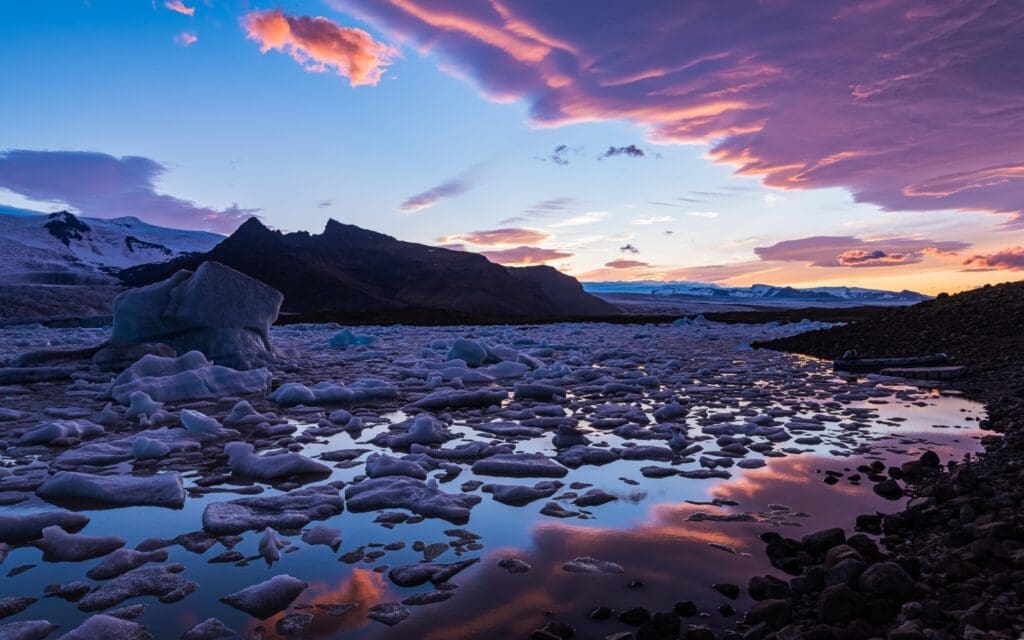
Welcome to one of the greatest sections of true Icelandic wilderness there is: The Vatnajökull National Park. Now a UNESCO World Heritage Site, this one dominates over 5,400 square miles (13,986 square kilometers) of the mountains in the southeast of the country. Scratch that, it basically is the southeast of the country, because the Vatnajökull has since subsumed neighboring nature reserves to become the largest of the lot in this corner of the North Atlantic.
At its center is the mighty ice field of Vatnajökull itself. That’s the biggest in Europe south of the Arctic Circle, with sheets of frozen water and snow measuring up to 1,970 feet (600 meters) in thickness at some points. To the north, the landscapes are dominated by the volcanic cones of Kverkfjöll, while the southern end of the reserve fragments into glacial tongues that roll off the sides of Öræfajökull (the highest point in the country). They go all the way down to wetlands and iceberg-dotted lagoons. Franky, it’s all pretty jaw-dropping stuff.
5. The Blue Lagoon
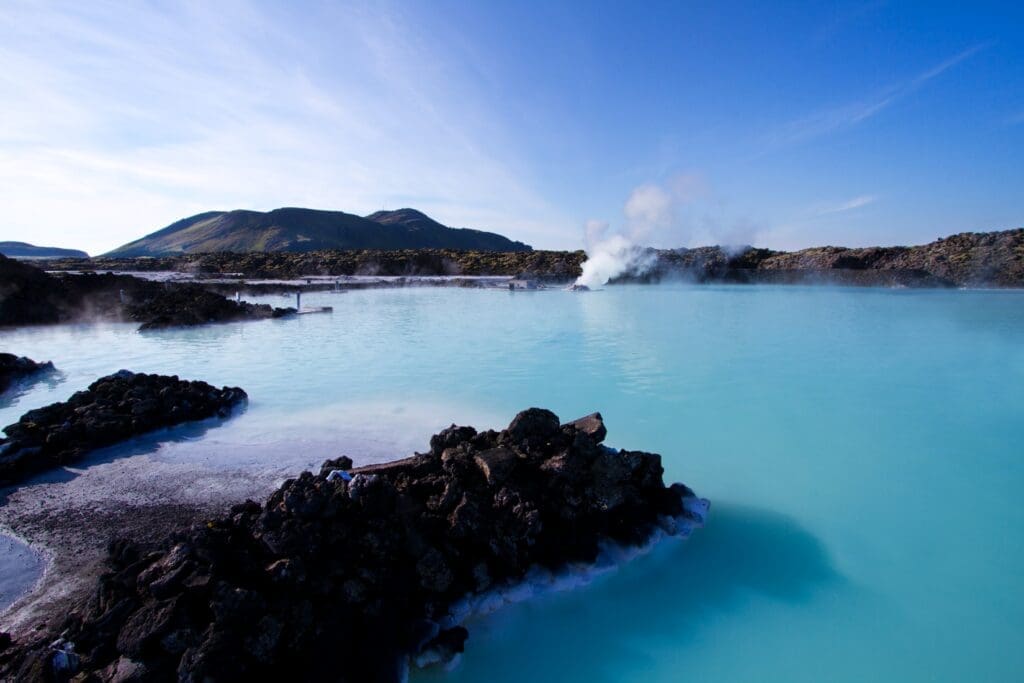
The Blue Lagoon is one of the most-visited spots in Iceland today, thus one of the best places to visit in Iceland. But it’s no ancient phenomenon. In fact, it’s entirely manmade and has only been going since the 1970s. The whole thing is the product of water run-off from the nearby Svartsengi geothermal power plant. After the H2O is drawn up from deep below the surface of the Reykjanes headland southwest of Reykjavík, it produces the energy needed to keep those Icelandic lights on and is then flooded out into the surrounding lava fields.
What gives the Blue Lagoon its signature milky-blue hue isn’t just the heat — it’s the silica. The tiny silica particles suspended in the water reflect sunlight in such a way that they appear blue to the human eye. What’s wild is that the water isn’t actually blue — it’s a kind of optical illusion created by light scattering. This color can also shift depending on the weather and time of day, sometimes appearing steel grey or even turquoise.
That’s now become a full-on mineral spa. There are a series of bathing ponds with average temperatures of between 85°F and 102°F (30°C and 39°C), all fed by a regular stream of saline-rich water with high algae content – a cocktail that’s said to work wonders for ailments such as arthritis and psoriasis. And there’s more than just the pools, because the Blue Lagoon complex now includes luxurious saunas and rejuvenating steam rooms to boot.
Check out how you can travel to Iceland with The Explorer’s Passage here.
6. Kirkjufell

There’s a good chance you’ve already seen Kirkjufell. It’s one of the most common frontages to postcards of Iceland, and one of the most photographed spots in the whole country, a great place to visit in Iceland. The reason? It rarely fails to take the breath away. Rated among the most beautiful summits in the world, it lurches like a shark fin straight from the heathlands and tussocks of the Snæfellsnes peninsula. Some call it the Church Mountain because it resembles the spire of a great cathedral, with one side looming above the sheep farms and another tossed about in the Atlantic Ocean.
Kirkjufell itself isn’t really climbable. It’s too thin and narrow, with layers of lava and sandstone rock ribbing both sides. However, there are some gorgeous walks in the area. The most famous of them takes you past the Kirkjufellsfoss waterfall, a cascade that drops over the bluffs with the peak forming the backdrop. Talk about a photo opportunity!
7. Geysir

Geysir might sound like it was named after a geyser, but it’s actually the other way around. Yep, this is the home of the first ever recorded spouting hot spring in Europe, a spectacular sight in Iceland. It lies on the rocky slopes of Haukadalur in the southwestern corner of Iceland. There, a gushing spurt of broiling water occasionally shoots from the earth, rising in plumes of steam and mist to over 220 feet (67 meters) in height, truly one of the best places to visit in Iceland.
The so-called Great Geysir is where most people go. After long periods of dormancy in the 1990s, it’s once again erupting regularly throughout the day. However, it still doesn’t go off quite as often as the nearby geyser at Strokkur. That’s just down the valley and offers to showcase the power of the Icelandic geothermal landscape every six minutes or so. Together, the great Geysir and Strokkur are a part of the must-see Golden Circle area of the country, which encompasses the water-logged canyons of Thingvellir National Park (see above) and the mighty falls of Gullfoss (more on those below).
8. Jökulsárlón Lagoon
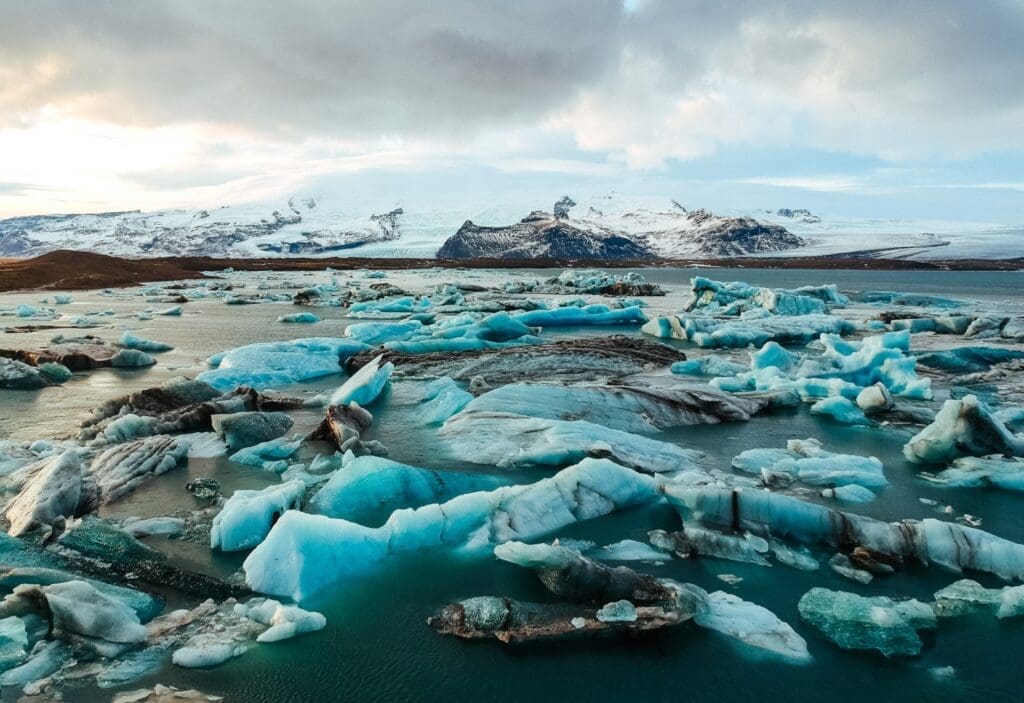
The huge opening of the Jökulsárlón lagoon pierces the landmass of southeastern Iceland. But ‘lagoon’ is a bit of a misnomer here, because this vast bay is actually a glacial lake, covering nearly seven square miles and reigning as the deepest lake in the country, clocking up over 930 feet from its bottom to its surface. Talking of the surface, it’s what’s on top that makes it one of the best places to visit in Iceland– think hulking, creaking, shimmering icebergs for as far as the eye can see!
One of the best ways to explore this ice-topped corner of the island is by boat. Groups head out to navigate routes around the floating masses of frozen water on amphibious vehicles. If you join them, be sure to keep your eyes peeled for both seal pups and the filming locations that were used in the 1985 James Bond, A View to a Kill. It’s also worth adding in a stop at the nearby Diamond Beach. It’s been named for the curious presence of ice crystals on the black sand, which glimmer like precious gemstones.
9. Westfjords
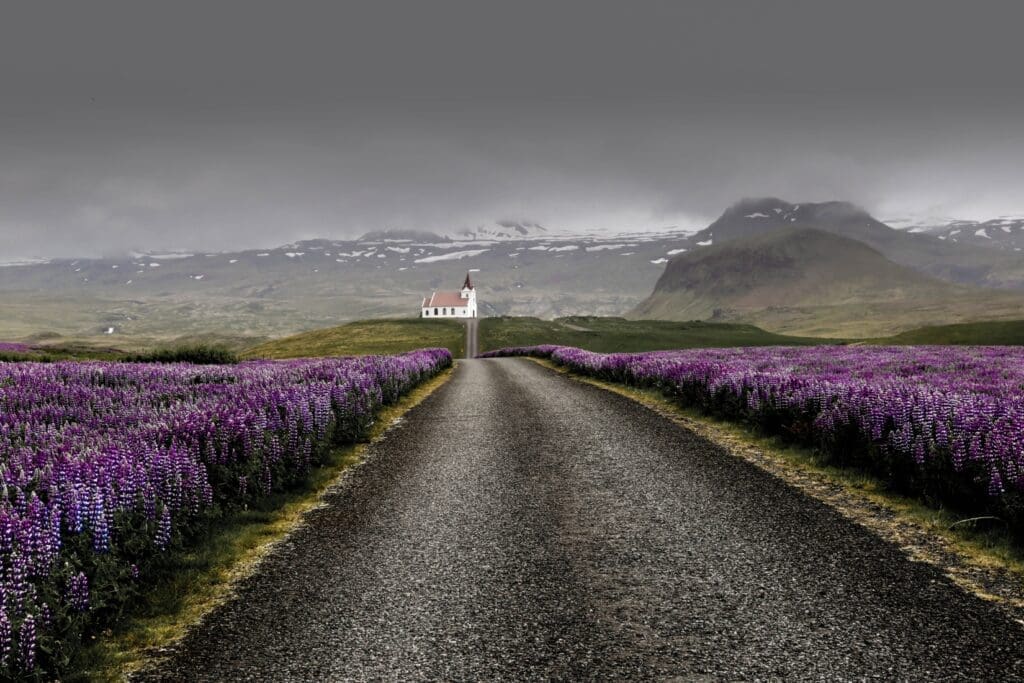
The Westfjords are the long-lost north-western edge of Iceland. A land far less traveled than the volcanic bays of the south, it’s somewhere to feel the true force of North Atlantic nature, and one of the best places to visit in Iceland. Here, tabletop mountains soar overhead, snow dusts the bluffs, and the rocks tumble dramatically into an unforgiving sea. Thankfully, there are roadways weaving and winding through most of the Westfjords (except for the far north – see below) but expect some challenging drives in very changeable weather conditions.
One of the hardest-to-reach corners of the Westfjords is the northernmost peninsular. That’s home to the Hornstrandir Nature Reserve, which was established way back in the 1970s to protect the resident arctic fox population. You can still go there, but it means ditching the wheels for the hiking boots and the hotels for canvass. The rewards are endless, though, including encounters with puffin colonies, walks through the remote Furufjordur, and a sighting of the Drangajökull glacier, the lowest-lying glacier in Iceland.
If you are interested in traveling with The Explorer’s Passage check out our Adventure Page!
10. Gullfoss Waterfall
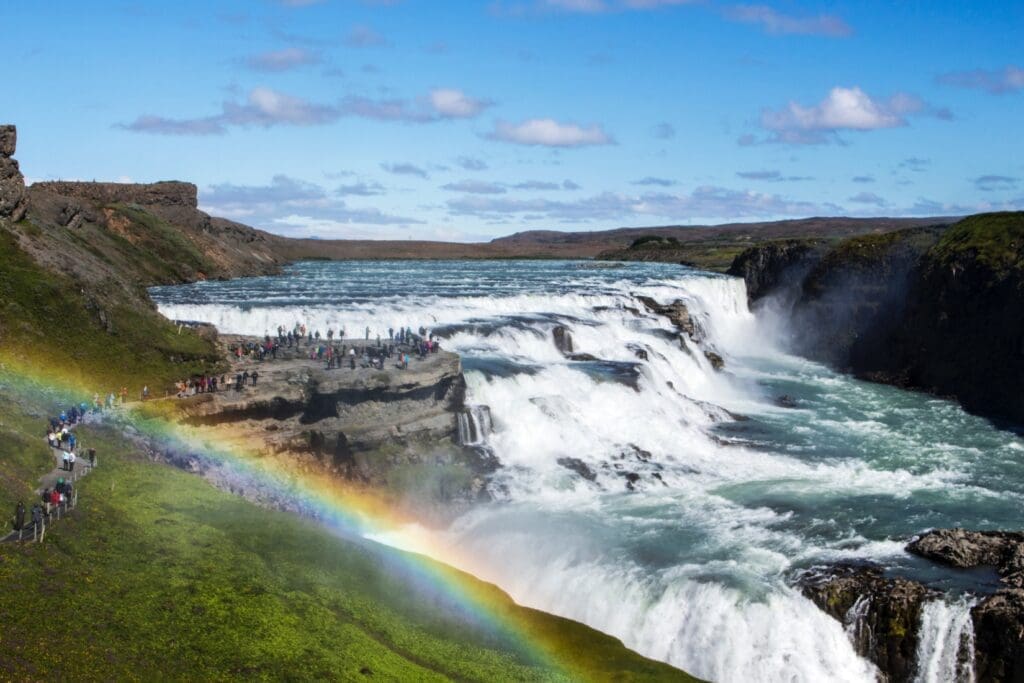
No list of the best places to visit in Iceland could possibly be complete without at least a mention of the Gullfoss Waterfall. Another part of the Golden Circle of major sites that lies east of Reykjavík, it’s easily the most dramatic of the three. Yep, expect to find a thundering cataract crashing over a diagonal ridge in a plateau along the Hvítá River. It descends in two tiers, first dropping 36 feet (11 meters) and then 69 feet (21 meters), straight down into a narrow gorge through plumes of mist.
The best way to appreciate the sheer power and beauty of the Gullfoss falls is to stand on the marked lookout points above where the water rolls over. At certain angles, it looks just as if the river is disappearing straight into the center of the Earth from there. During the winter, when Gullfoss is often encrusted with ice, some lookouts are closed, though the site looks particularly eerie and raw when the snows come in.
11. Laugavegur
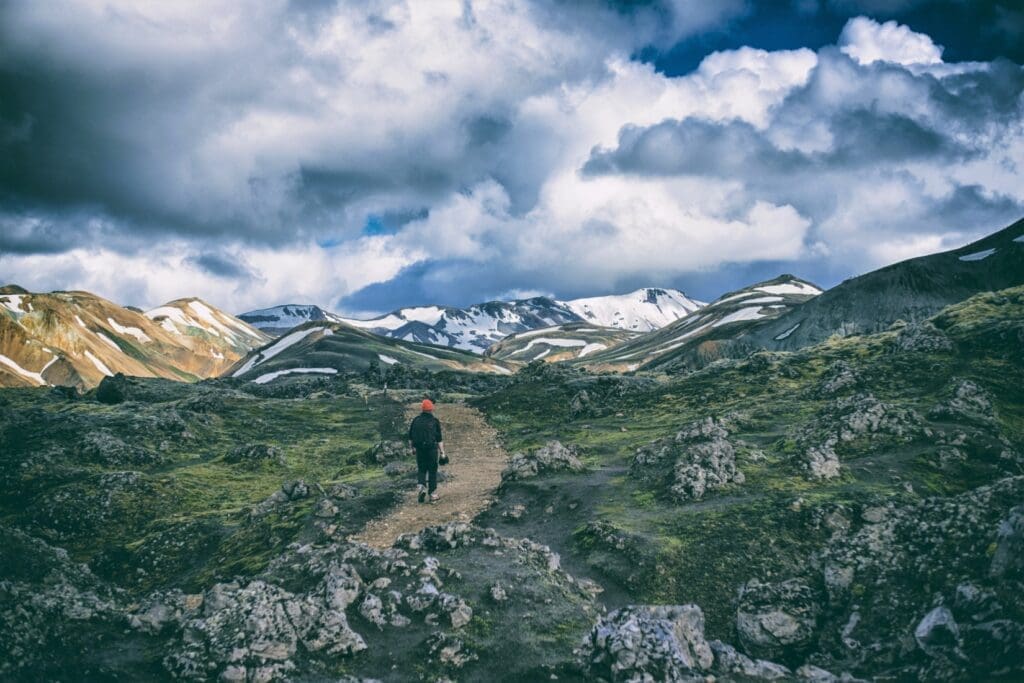
There’s no more iconic long-distance trekking route in the Land of Fire and Ice than the Laugavegur Trail. This four- to five-day adventure over the remote highlands that form the heart of the island’s Southern Region takes you from simmering volcanic springs on the slopes of active volcanoes all the way to the gaping glacier valleys of Thórsmörk nearer the wild North Atlantic.
If you’re feeling up to it, we think this is one of the greatest ways to appreciate the raw beauty of Iceland as a whole. You’ll navigate 34 miles (55 kilometers) of backcountry and get to see some seriously jaw-dropping locations, from the inky scree slopes of the mighty Hrafntinnusker mountain to the multi-colored lava wastes of Laugahraun, where sulfuric fumaroles seem to spurt from the ground without warning. You’ll also get to stay in long-lost mountain huts along the way, often totally isolated from the next bout of civilization.
Planning your hike on the Laugavegur Trail properly can be a challenge. No permit is required for this bucket-list route but you do need to pre-book your hut stays way in advance before arriving. Remember you’ll be jostling with lots of other trekkers if you plan to come in the peak months of June, July, August or even September. Book this tour with The Explorer’s Passage and we can take care of all the planning on your behalf.
12. Landmannalaugar

The start of the epic Laugavegur Trail (see above) is best known for its forever-steaming hot springs. Set deep in the Southern Highlands some 120 miles (193 kilometers) from Reykjavík, these broiling pools offer a bath you’re not likely to forget in a hurry. They’re hemmed in by the craggy top of the Torfajökull volcano and swathes of emerald-green meadows. The pools maintain a steady 97-104°F (36-40°C) and are totally free to enter.
But Landmannalaugar has more than just wild bathing spots to offer. This corner of the country is the gateway to Iceland’s legendary rhyolite mountains. There are day-long and multi-day treks up in those that reveal vistas of Technicolor slopes dashed with pinks, yellows, ochres, and purples, a product of the unique geothermal activity that’s been going on underground for millennia.
The remoteness of the Landmannalaugar valley means that there’s also next to zero light pollution in these parts. The upshot? If you’re lucky, you might just find yourself splashing in springs as the Northern Lights dance across the cosmos overhead. On the flip side, the remoteness does mean travelers are also likely to need a 4X4 to arrive.
13. Skógafoss

Skógafoss is a rip-roaring waterfall and one of the most dramatic in the whole country – that’s really saying something in Iceland, too, where it can seem like there’s a cataract around every bend in the road. This one spans a whopping 82 feet (25 meters) across and plummets 197 feet (60 meters) from top to bottom. It crashes over a ridge just a whisker off the Icelandic Ring Road, under the snowy tops of gigantic Eyjafjöll volcano.
The walk up to the Skógafoss falls gets you close to plumes of mist and spraying water. You’ll trek over the loose rocks that line the Skógá River to gain a viewpoint that takes in the waterfall from the front. Daring folk might choose to peer even nearer, to see if they can spy out the cave that lurks behind the streams of H2O – legend has it that Iceland’s first Viking stashed his treasure within!
The Skógafoss waterfall is the site of the trailhead for the Fimmvörðuháls hike. That’s arguably the best day trek in the Southern Region, offering to take you 3,500 feet (1,067 meters) high through a patchwork of meandering rivers and lush grasslands. Be warned, though, it’s a 14-hour undertaking!
14. Seljalandsfoss
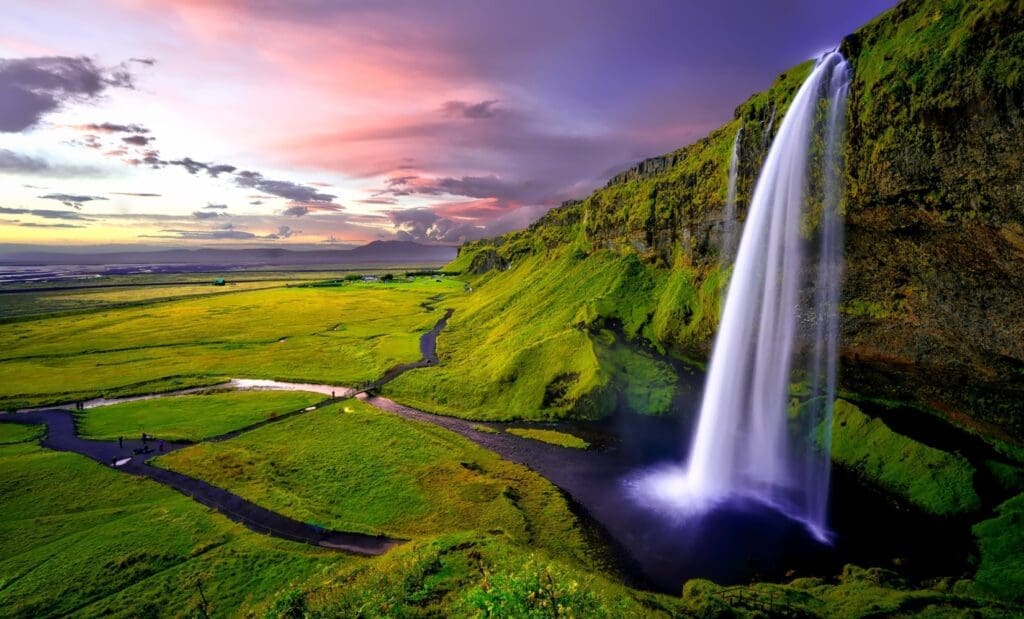
The majestic Seljalandsfoss waterfall rolls off a ridge along the courses of the Seljalands River, one of the umpteen waterways that peel off the great ice sheets of Eyjafjallajökull glacier high above. It’s only a short detour off the main Ring Road and, some say, arguably the most photogenic of all the waterfalls in the country. So, certainly worth it!
The reason for the plaudits is largely down to the fact that Seljalandsfoss can be traversed a full 360 degrees. A gaping cavern hollowed out behind the cataract allows walkers who don’t mind getting a little wet to clamber beyond the continuous torrent of aqua. From there, they can wonder at the thundering sounds and coastal flatlands that roll out to meet the horizon.
Book your Iceland trip with The Explorer’s Passage and let us take care of all the details.

We have been running trips and treks to Iceland for years. We pride ourselves on delivering extraordinary tours based on travelers’ needs and are humbled by our guests’ testimonials. In fact, our dedication has earned us a 5-star rating on Tripadvisor, and awards by Travel+Leisure Magazine and Newsweek. Check us out and discover why so many travelers worldwide choose us. My team and I would love for you to join us in Iceland or any of our other adventures!
I hope to go exploring with you soon!
Cheers,
Jeff
Jeff Bonaldi
Founder & CEO
The Explorer’s Passage
About Jeff Bonaldi
Jeff Bonaldi is the Founder and CEO of The Explorer’s Passage, a premier adventure travel company. His mission is to provide travelers with the opportunity to transform their lives and the planet through the power of adventure.
Learn more about Jeff’s story and his company HERE.
Share this amazing location!

